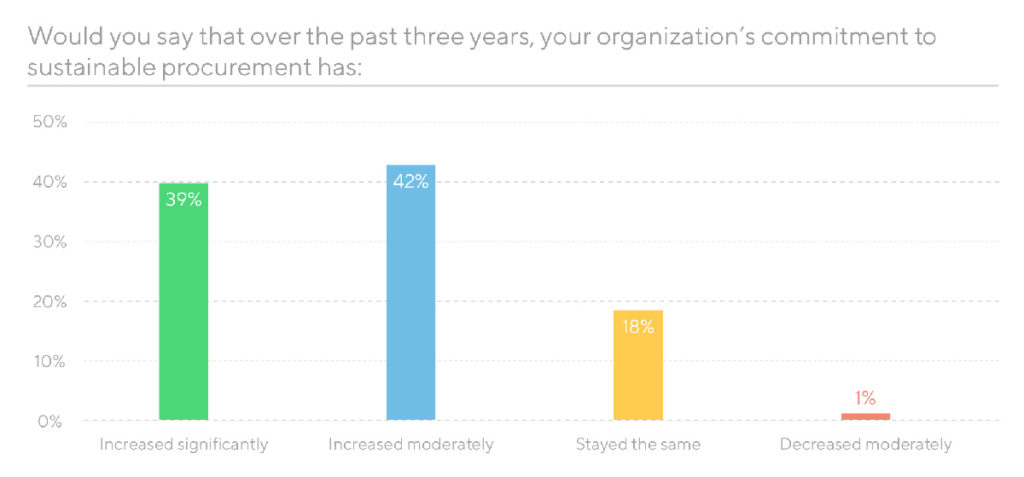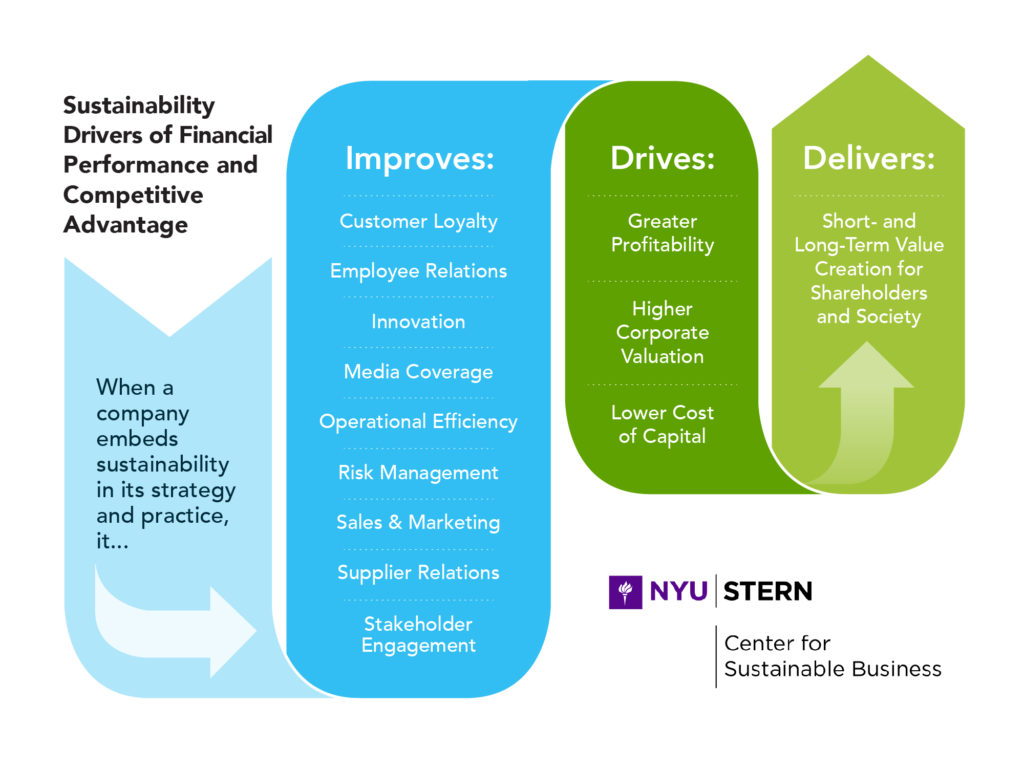The 2019 Sustainable Procurement Barometer is here, with some key insights on the current state of sustainable procurement and trends for how organizations around the globe are tackling sustainability in their supply chains.
Our Barometer is biennial and surveys companies around the world about their priorities, approaches and tools when it comes to sustainability. This year marked a significant difference in the types of organizations who participated, uncovering interesting distinctions between organizations with mature sustainable procurement programs and those perhaps at the start of their journey. Overall, we’re seeing continued evolution in the sustainable procurement market as awareness, importance and investment in sustainable procurement initiatives continue to grow and drive business value.
Here are the top trends revealed this year:
- Overall, sustainability awareness is growing. The percentage of companies having between 25 and 75 percent of high-risk and strategic suppliers covered by sustainability programs remains at the same level. Given the wider pool of respondents this year, this actually indicates progress, signaling that more organizations are launching sustainability initiatives – they just need time to scale up their programs. Additionally, we found that commitment to sustainable procurement programs has increased to 81 percent and executive board support has grown significantly in the past six years – only seen as a challenge for 13 percent of respondents. All indications that more organizations are embracing sustainable procurement practices and those already in the journey are seeing greater executive involvement and investment.

- A very real and risky compliance trap. More organizations than ever before (66 percent) cite complying with regulations as a critically important aspect of their sustainable procurement initiative, compared to 27 percent in 2017. This is likely due to an increasingly stringent regulatory landscape, but we’re seeing many organizations fall into a “compliance trap,” where they are underinvesting in the short term to essentially check the regulatory boxes, but stop short of driving more value from suppliers and achieve greater business performance from more holistic and collaborative programs. In the long term, this approach is also less cost-effective and poses higher risk.
- Shifting priorities to social and labor themes. In our 2017 Barometer study, we saw for the first time a shift in focus towards human rights/labor and business ethics initiatives within sustainable procurement programs. Attention was shifting away from environmentally-oriented concerns, and we saw similar results in this year’s study. 34 percent of procurement organizations said that labor and human rights practices have become significantly more important over the past three years, 33 percent said the same for business ethics and only 22 percent observed the shift toward environmental concerns. Several factors could be influencing this shift, such as the perception that environmental concerns are adequately covered by compliance standards. Additionally, we hypothesized that organizations may find it easier to introduce and enforce codes of conduct for labor and ethics issues versus asking for infrastructural changes.
The other overarching theme from the study, which was conducted with our research partner, the NYU Stern Center for Sustainable Business, is the drive toward Return on Sustainability Investment (ROSITM) and the push towards measuring sustainable procurement programs through financial and other business metrics – breaking down silos and proving the bottom-line impact of these programs as they are well-positioned to manage risk along the supply chain, drive innovation through supplier bases and realize new competitive advantages.

Stay tuned for additional dives into these trends and other findings from this year’s Barometer, which are coming soon, and download the full 2019 Sustainable Procurement Barometer to read the results and analysis in the meantime.
Download the full 2019 Sustainable Procurement Barometer






















